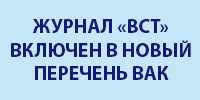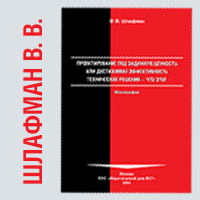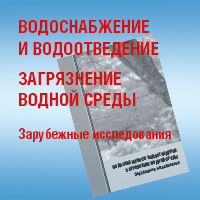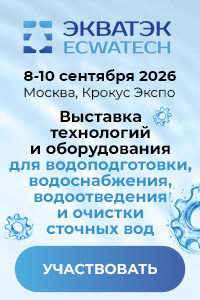№10|2025
WASTE MANAGEMENT
UDC 628.381.1
DOI 10.35776/VST.2025.10.07
Study of using domestic wastewater sludge as a multifunctional additive in the process of ceramic brick production
Summary
While using wastewater sludge as an additive in the production of ceramic bricks, the precise moisture content of the sludge must be taken into account, since it affects the burning time at the required temperature. Based on analyses and published literature data, the following types were chosen for the follow-up studies of using sludge as a multifunctional additive in ceramic bricks: mature sludge from sludge beds; mature sludge from sludge beds with the addition of a mixture of raw sludge and excess activated sludge (50:50 ratio) from the Samara municipal wastewater treatment facilities. The experiment was based on theoretical assumptions and hypotheses. Furnace charge from the Samara Ceramic Material Plant using standard ceramic brick production technology, was taken as a basis. The experiment involved replacing ash and some of the coal clay with the waste in question – domestic wastewater sludge. Based on this sludge, the composition was developed and the process parameters for producing porous aluminosilicate filler were determined. The obtained filler with a fine-porous structure and a density of 400–700 kg/m3 is comparable in properties to expanded clay gravel. This filler is recommended as a coarse aggregate in the composition of foamed concrete.
Key words
activated sludge , wastewater sludges , sludge utilization , solid part of sludge , composition of sludge dry matter , production of ceramic materials , multifunctional additives
For citation: Strelkov A. K., Teplykh S. Iu., Teplykh E. A., Davidenko A. Iu. Study of using domestic wastewater sludge as a multifunctional additive in the process of ceramic brick production. Vodosnabzhenie i Sanitarnaia Tekhnika, 2025, no. 10, pp. 55–60. DOI: 10.35776/VST.2025.10.07. (In Russian).
The further text is accessible on a paid subscription.
For authorisation enter the login/password.
Or subscribe
REFERENCES
- Туровский И. С. Обработка осадков сточных вод. – М.: Строиздат, 1988. 256 с.
Turovskii I. S. Obrabotka osadkov stochnykh vod [Wastewater sludge treatment. Moscow, Stroiizdat Publ., 1988, 256 p.]. - Лурье Ю. Ю. Аналитическая химия промышленных сточных вод. – М.: Химия, 1984. 448 с.
Lur’e Iu. Iu. Analiticheskaia khimiia promyshlennykh stochnykh vod [Analytical chemistry of industrial wastewater. Moscow, Khimiia Publ., 1984, 448 p.]. - Стрелков А. К., Теплых С. Ю., Теплых Е. А., Поршина Е. Г. Обоснование использования осадка биологически очищенных сточных вод при производстве керамических материалов // Водоснабжение и санитарная техника. 2024. № 9. С. 52–60. DOI: 10.35776/VST.2024.09.08.
Strelkov A. K., Teplykh S. Iu., Teplykh E. A., Porshina E. G. [Justification for the use of sludge of biologically treated wastewater in the production of ceramic materials]. Vodosnabzhenie i Sanitarnaia Tekhnika, 2024, no. 9, pp. 52–60. DOI: 10.35776/VST.2024.09.08. (In Russian). - Кичигин В. И., Юдин А. А. Экспериментально-статистические модели влагоотдачи обработанной реагентами смеси сырого осадка и уплотненного активного ила // Градостроительство и архитектура. 2024. Т. 14. № 1. C. 4–11. DOI: 10.17673/Vestnik.2024.01.01.
Kichigin V. I., Iudin A. A. [Experimental statistical models of the water yielding capacity of a mixture of raw sludge and thickened activated sludge treated with chemicals]. Gradostroitel’stvo i Arkhitektura, 2024, v. 14, no. 1, pp. 4–11. DOI: 10.17673/Vestnik.2024.01.01. (In Russian). - Теплых С. Ю., Тополова В. В. Технология компостирования осадка иловых полей очистных сооружений // Градостроительство и архитектура. 2022. Т. 12. № 1. C. 143–153. DOI:10.17673/Vestnik.2022.01.19.
Teplykh S. Iu., Topolova V. V. [Technology of composting sludge from sludge beds of the wastewater treatment facilities]. Gradostroitel’stvo i Arkhitektura, 2022, v. 12, no. 1, pp. 143–153. DOI: 10.17673/Vestnik.2022.01.19. (In Russian). - Кичигин В. И., Юдин А. А. Исследование зависимости удельного сопротивления осадка от его влажности и исходной концентрации бентонитового замутнителя // Градостроительство и архитектура. 2023. Т. 13. № 2. C. 22–30. DOI: 10.17673/Vestnik.2023.02.04.
Kichigin V. I., Iudin A. A. [Study of the dependence of the specific sludge resistivity on the moisture content and initial concentration of bentonite opacifier]. Gradostroitel’stvo i Arkhitektura, 2023, v. 13, no. 2, pp. 22–30. DOI: 10.17673/Vestnik.2023.02.04. (In Russian). - Матвеев А. Г. К вопросу о принятии решений в условиях неопределенности / Актуальные проблемы экономической деятельности и образования в современных условиях: Сборник научных трудов Двенадцатой Международной научно-практической конференции, посвященной 110-летию РЭУ им. Г. В. Плеханова. – Оренбург, Оренбургский филиал РЭУ им. Г. В. Плеханова, 2017. С. 210–215.
Matveev A. G. [On the issue of decision-making under uncertainty]. Current issues of economic activity and education in modern conditions. Book of reports of the 12th International Scientific and Practical Conference dedicated to the 110th Anniversary of the Plekhanov Russian University of Economics. Orenburg, Orenburg Branch of the Plekhanov Russian University of Economics, 2017, pp. 210–215. (In Russian). - Пиявский Б. С. Разработка комплексной методики сравнительного анализа аэрокосмических систем: Дисс. ... кандидата технических наук. – М., 2010. 131 с.
Piiavskii B. S. Razrabotka kompleksnoi metodiki sravnitel’nogo analiza aerokosmicheskikh sistem [Development of a comprehensive methodology for comparative analysis of aerospace systems. Synopsis of a thesis for Ph. D. degree in Engineering. Moscow, 2010, 131 p.]. - Коренькова Е. А. Научно-практические основы применения осадков бытовых сточных вод в керамических материалах: Дисс. … кандидата технических наук. – Самара, 2006. 190 с.
Koren’kova E. A. [Scientific and practical principles of using domestic wastewater sludge in ceramic materials. Synopsis of a thesis for Ph. D. degree in Engineering. Samara, 2006, 190 p.].






